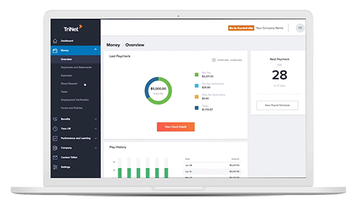Workplace Flexibility: Weighing the Pros and Cons

Table of contents
- 1.What is Workplace Flexibility?
- 2.Why Does Flexibility in the Workplace Matter?
- 3.Examples of Workplace Flexibility
- 4.Pros of Workplace Flexibility
- 5.Stronger Talent Acquisition
- 6.Reduced Employee Turnover
- 7.Improved Employee Engagement
- 8.Increased Productivity and Creativity
- 9.Healthier Work-Life Balance
- 10.Saves Time and Money
- 11.Cons of Workplace Flexibility
- 12.Blurred Work-Life Balance
- 13.More Distractions
- 14.Communication Issues
- 15.Diminished Company Culture
- 16.Difficulty Tracking Accountability
Everyone’s daily schedule is different, but in recent years there’s been a dramatic shift towards increasing workplace independence through flexible hours. Since non-exempt employees are paid for all hours worked, their time worked must be tracked carefully, which makes offering a flexible schedule challenging. Exempt employees on the other hand are more suited for workplace flexibility that allows them to work outside of office hours and adapt their schedules thus facilitating stronger work-life balance. Over the past few years as some employees have transitioned to working from home, companies are beginning to test out more flexible schedules.1 For more information on the impact of these changes, we aim to weigh the pros and cons of workplace flexibility.
What is Workplace Flexibility?
Workplace flexibility is the potential to work over the course of non-defined periods of time. It means that workers are able to start, stop, and continue their workday at various times throughout the day and aren’t required to adhere to traditional business hours. If employees have something to do during the day, they’re able to continue working at a time of their choosing. In some instances, workplace flexibility also includes working from different states to accommodate employees' life scenarios, thus helping to optimize balance. While work still needs to be completed and deadlines need to be met, the environment and time in which the tasks are completed doesn’t matter as much. Since the pandemic changed traditional office culture, more companies are making the switch to embrace workplace flexibility.2
Why Does Flexibility in the Workplace Matter?
The primary reason flexibility in the workplace is important is the growing demand for a stronger work-life balance. It offers distinct benefits to employees who are trying to adhere to other responsibilities, such as eldercare, childcare or school. Also, as more Gen Z individuals enter the working world joining Millennials, the desire for flexible working options has increased and many job searchers are passing on opportunities that don’t meet their requirements.3
Examples of Workplace Flexibility
There are several different types of flexible work schedules that can be implemented across industries. Some examples include a daily flexible schedule, a compressed workweek and split shifts.
Daily flex schedules allow employees to choose their working hours throughout the day. They may opt to start work early so they can finish early, begin later and work later, work at night or take days off in the middle of the week and work over the weekend. These schedules should be discussed beforehand in case there are any requirements for individuals to be online and available at specific times that the employee needs to understand and agree to. A compressed workweek is when employees complete their weekly job duties for four days a week so they can have three days off during their designated workweek. Split shifts are when an employee splits the work they perform throughout the day. They may begin and work in the morning, take a break then complete their remaining work at night. Or they could perform some work in the morning, some more work in the afternoon and then finish work for the day at night. Not all schedules align for every industry, but there are several options for modifications

Pros of Workplace Flexibility
As more companies make the switch to flexible schedules and work from home options, it’s becoming increasingly important to consider the potential benefits of doing so. While there’s a degree of freedom involved, the advantages often extend far past the ability to choose your own hours. Some of the biggest benefits of implementing workplace flexibility include the following:
Stronger Talent Acquisition
As more people retire, the average age of workers is getting younger. In fact, millennials now make up 35% of the workforce in the United States.4 This demographic has been raised with the ability to perform most tasks—shopping, going to school, communicating, etc.—online from the comfort of their home. Of the millennials surveyed, 67% said that they look for flexibility in scheduling to better segment their lives and spend more time with their families.5 Workplace flexibility may boost talent acquisition and strengthen your workforce.
Reduced Employee Turnover
Once hired, employees with the option to create flexible schedules are less likely to leave a company. Several surveys indicate that employees would choose a job that offers a flexible schedule over one that doesn’t.6 This may lead to a healthier relationship with work, which could strengthen workforce loyalty. Workplace flexibility may improve overall employee experience, which, in turn, may reduce the rate of turnover within an organization.
Improved Employee Engagement
Companies that offer flexible scheduling may have happier employees who are more engaged with their work. The freedom to create a schedule that aligns with their lifestyle can make employees feel appreciated and heard. This may lead to a reciprocity within their work output and a commitment to your big-picture organizational goals.
Increased Productivity and Creativity
Some people work efficiently in the morning, while others produce their best work at night. Allowing individuals to choose their schedules may therefore, help boost productivity levels. However, not everyone thrives under these conditions, which is why it’s important to understand your workforce and utilize the best option for everyone.
Healthier Work-Life Balance
One of the biggest reasons that people enjoy workplace flexibility is the liberty to create their own schedule, thus optimizing work-life balance. Employees may be able to manage additional activities, education, childcare, doctor’s appointments and errands more efficiently without worrying about having to take time off. This, in turn, may reduce work related stress and improve the wellbeing of your workforce.
Saves Time and Money
Since some employees may be able to work solely from home, overhead costs within a company are reduced. You may not need as much office space, equipment or technology, potentially lowering your company expenses. Employees also benefit from this, as they can save both time and money on daily commutes. Even if they still come into the office, doing so later in the morning or the afternoon could allow them to beat the traffic and avoid wasting time.
Cons of Workplace Flexibility
While there are some great advantages to workplace flexibility, it’s not always the right option for everyone. People work differently and many depend on the structure to separate their work life from their professional life. Some of the disadvantages of utilizing flexible work schedules include the following:
Blurred Work-Life Balance
While many people find workplace flexibility to have positive effects on work-life balance, it can also create a grey area. Some people aren’t able to create organizational boundaries when implementing flexible schedules, and therefore work more with a flexible schedule versus a traditional schedule, which may have negative effects on output and overall mental health.
More Distractions
If workplace flexibility includes working from home, employees may be at a greater risk of distractions. They may have children and pets to care for, chores that need to be done or simply aren’t disciplined enough to turn off the TV and get to work. For this type of schedule to be utilized, employees need to be able to eliminate distractions and focus on their tasks. Certain types of workplace flexibility can also contribute to greater rates of procrastination, which could result in missed deadlines or subpar work performance.
Communication Issues
If everyone on your workforce schedules different working hours, communication can become difficult. This gets even harder when clients are involved. To avoid problems with communication, it’s important to develop a strategy ahead of time so that everyone understands how to reach each other when there are urgent questions interfering with productivity.
Diminished Company Culture
Many people enjoy going into the office for the social aspects involved. When you work different hours from your colleagues or utilize remote options, you may eliminate the social aspects of company culture. This has the potential to reduce morale and create a sense of disconnect within your organization.
Difficulty Tracking Accountability
When teams are working in an office during the same hours, it can be easier for employees to feel their work, and the time they spend doing it, is monitored. Remote work and flexible schedules require a degree of self-discipline which can be difficult for some people to attain. When workplace flexibility is implemented, it’s important for expectations to be clearly communicated so employees know how to hold themselves accountable.
Exempt employees are better suited for workplace flexibility, while non-exempt employees are better suited to the adherence to traditional schedules. The important thing is weighing the pros and cons to determine which, if any, type of workplace flexibility you can implement. Since there are several options for flexible schedules, you can still offer a smaller degree of variation instead of giving over complete freedom to your workforce. To help you create a stronger employee experience, TriNet offers full-service HR solutions to SMBs across various industries.
2 Fortune, “Say Goodbye to 9-5: More and more, corporate America is letting people work whenever they want.”
3 Flex Jobs, “Survey: Changing Workplace Priorities of Millennials.”
4 Pew Research Center, “Millennials are the largest generation in the U.S. labor force.”
5 Flex Jobs, “Survey: Changing Workplace Priorities of Millennials.”
6 PR Newswire, “New Research Shows That Flexible Working is Now a Top Consideration in the War for Talent.”

TriNet Team
Table of contents
- 1.What is Workplace Flexibility?
- 2.Why Does Flexibility in the Workplace Matter?
- 3.Examples of Workplace Flexibility
- 4.Pros of Workplace Flexibility
- 5.Stronger Talent Acquisition
- 6.Reduced Employee Turnover
- 7.Improved Employee Engagement
- 8.Increased Productivity and Creativity
- 9.Healthier Work-Life Balance
- 10.Saves Time and Money
- 11.Cons of Workplace Flexibility
- 12.Blurred Work-Life Balance
- 13.More Distractions
- 14.Communication Issues
- 15.Diminished Company Culture
- 16.Difficulty Tracking Accountability




